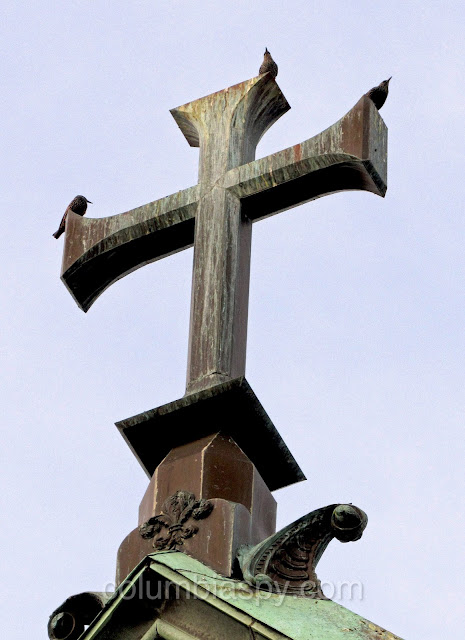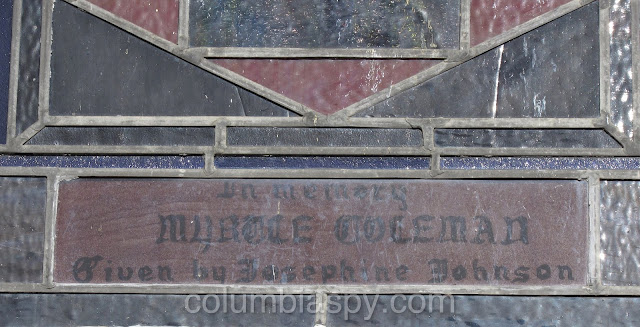Superman in jail? The bars must be made of kryptonite.
This will happen soon enough.
Here's a cozy little home shrouded by snow on the first block of South 3rd.
Last of the season, most likely
Not necessarily good advice
But this probably is good advice.
The many steps to pumpkinhood
Starling convention near the railroad tracks
Speaking of the railroad tracks, here's a couple of fancy train cars.
And there they go.
Assuming the snacking stance
When nuts aren't available, he'll settle for maple tree seeds, as shown here.
The Keeley stoves are still inside the Market House.
Here's the third one.
Differing views on religion
The Railroad Administration Office of Safety - mobile, no less
CAT ON BOARD
Pick yourself up afterwards
Yes, please patrol.
Busted windows
At the Mount Zion A.M.E Church on South 5th:
There are several unique stained glass windows, each with a memorial tribute, as shown below.
****************
Contrail-riddled sky. (No, the government isn't trying to kill us - at least not like this.)
Makes for an interesting sunset, though.
Building for sale on Bridge Street
There's the sign.
The building comes complete with a ghost sign and keystone/datestone.
Those Warthogs get lower all the time.
There were visitors at the Elks on Saturday.
Here's the "backstory."
Rust-colored sign all aglow
Yes, we did get some foliage.
Giant ice cream cone at Coffee & Cream


















































